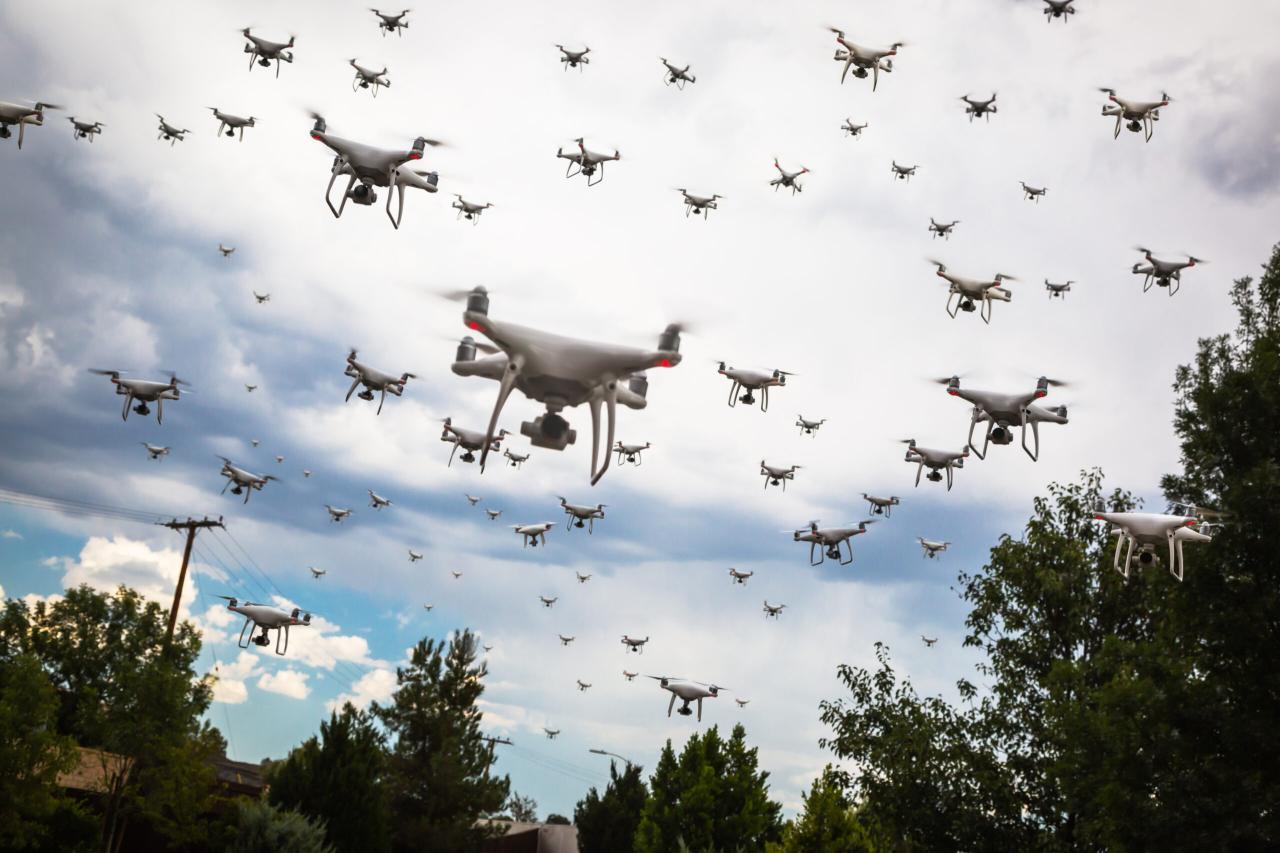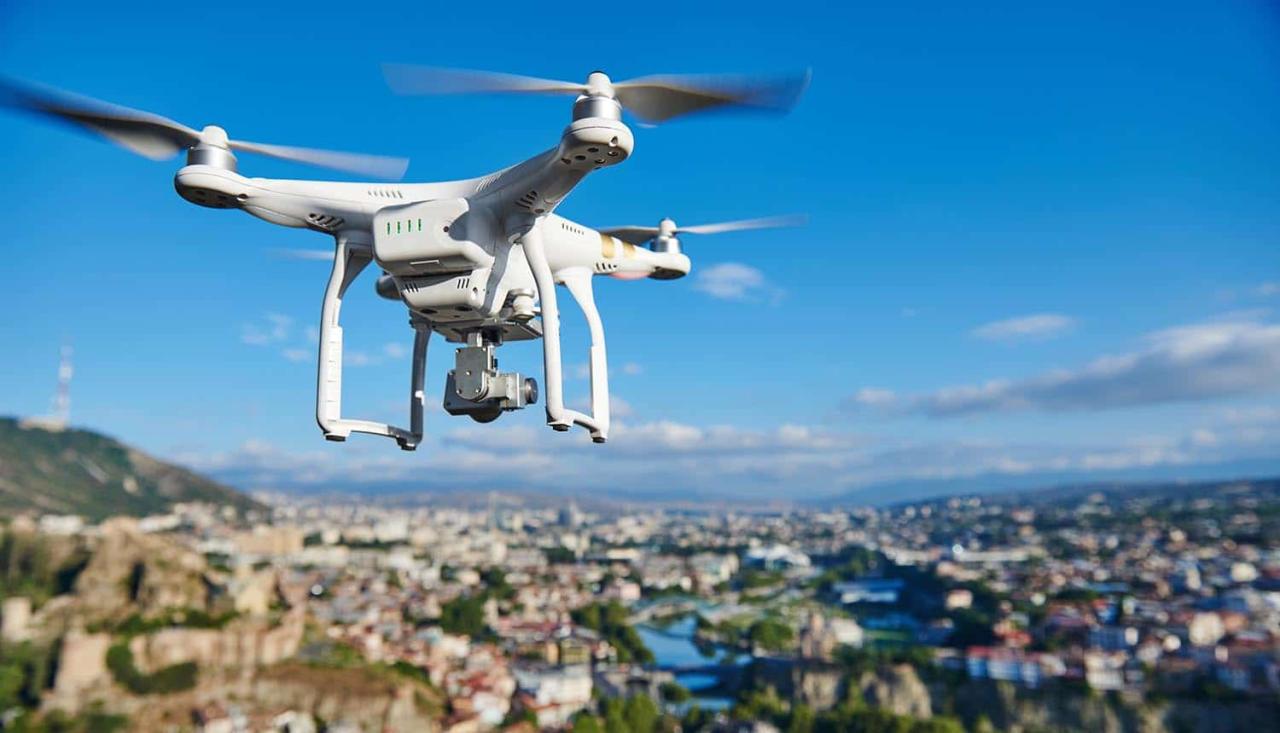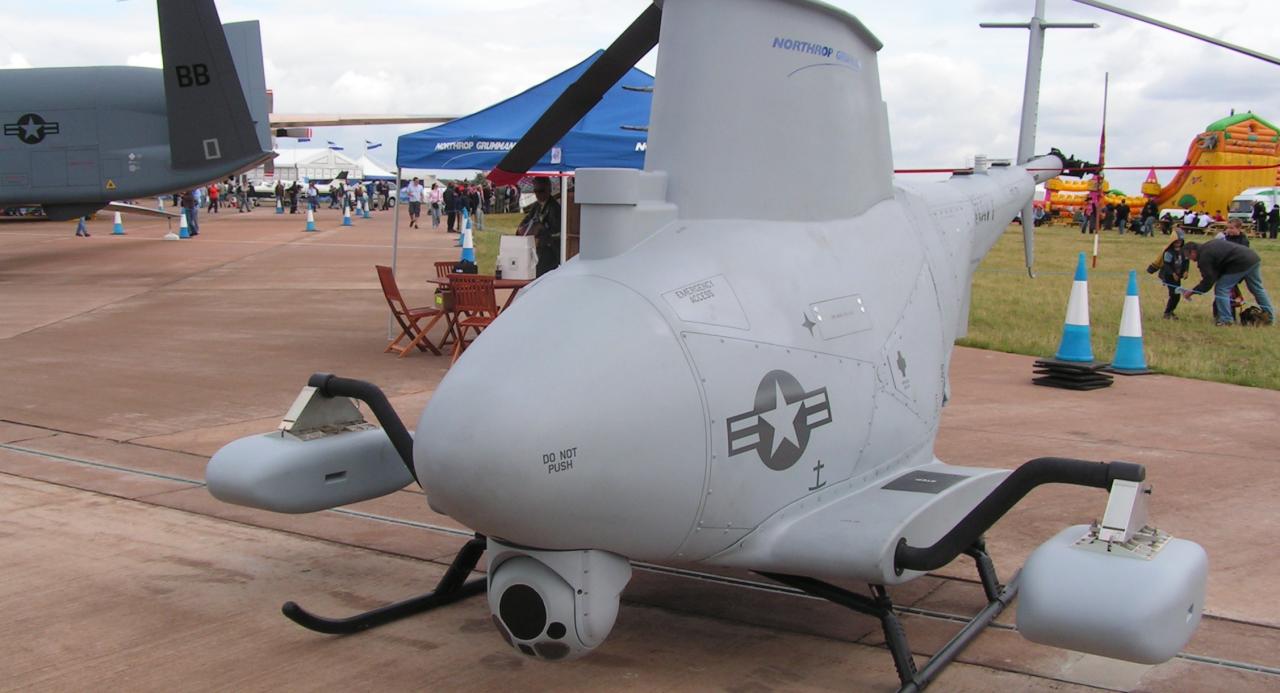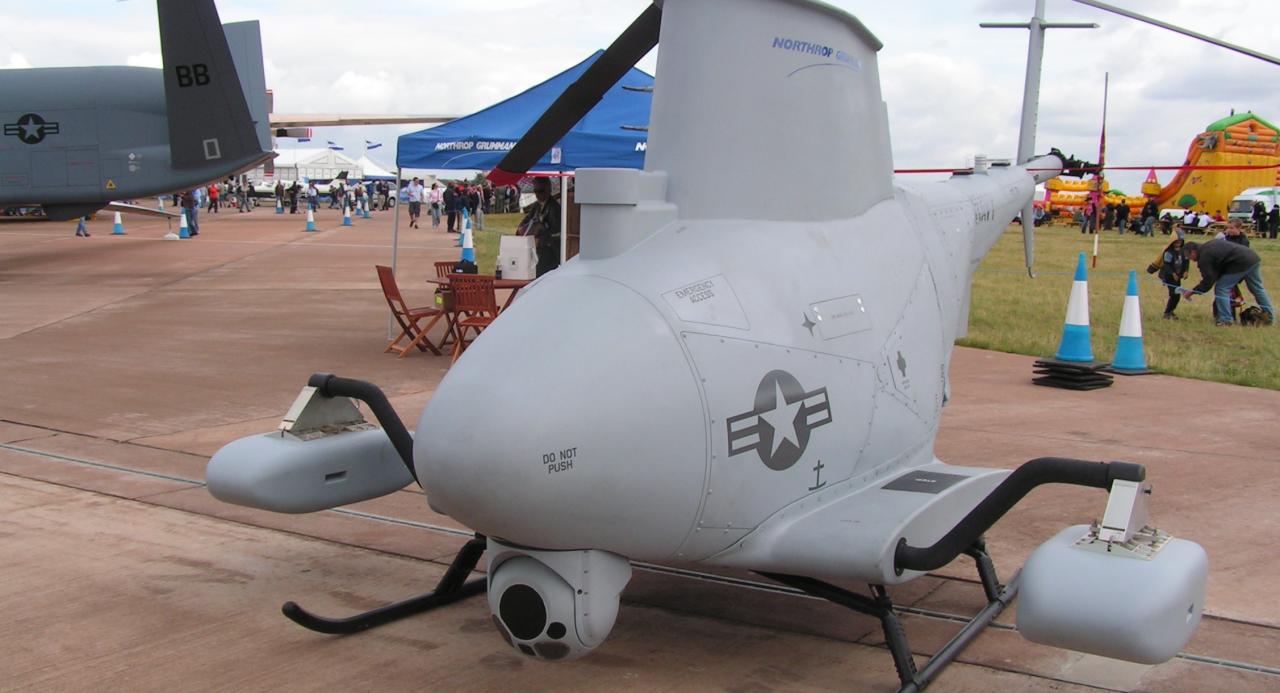US drone sightings are becoming increasingly common, sparking a mix of curiosity, concern, and debate. This report delves into the various aspects of this phenomenon, from the geographical distribution of sightings to the security implications and public perception. We’ll explore the types of drones observed, their activities, and the evolving legal landscape surrounding their operation. Prepare for a fascinating look at the rise of drones in the US airspace.
Understanding the trends in drone sightings requires analyzing a vast amount of data. This includes geographical locations, time stamps, types of drones, and reported activities. By examining these factors, we can gain valuable insights into the patterns and potential implications of this growing phenomenon. This data-driven approach will allow us to build a clearer picture of the role drones are playing in American society, and the challenges they pose.
Geographic Distribution of US Drone Sightings
Reported US drone sightings are not uniformly distributed across the country. Several factors influence the frequency of sightings in different regions. Analyzing this geographical distribution provides valuable insights into drone usage patterns and potential security concerns.
State-Level Sightings Data
The following table presents hypothetical data illustrating the frequency of reported US drone sightings across various states. Note that precise, publicly available data on drone sightings at this level of granularity is often limited due to privacy and security concerns. This table uses estimated data for illustrative purposes.
Want to keep tabs on those buzzing things in the sky? Reports of US drone sightings are becoming more frequent, and it’s useful to have a reliable source for information. Check out this website for updates on us drone sightings to stay informed about locations and potential implications. Understanding the patterns of US drone sightings can help us better prepare for the future of this technology.
| State | Number of Sightings | Average Altitude (ft) | Date Range of Sightings |
|---|---|---|---|
| California | 500 | 250 | 2020-2023 |
| Texas | 300 | 150 | 2021-2023 |
| Florida | 200 | 100 | 2022-2023 |
| New York | 150 | 300 | 2020-2023 |
| Nevada | 75 | 500 | 2021-2023 |
Factors Influencing Sighting Frequency
Variations in sighting frequency can be attributed to several factors. High population density areas naturally lead to more sightings, as drones are more likely to be observed in populated areas. Geographical features like mountains or large bodies of water can impact drone visibility and flight paths. Proximity to military bases or other sensitive locations may also influence sighting frequency due to increased surveillance or drone activity.
Examples of Regions with Unusual Sighting Frequencies
States like Nevada, with its large, sparsely populated areas and military installations, might show a higher number of sightings related to military operations or testing. Conversely, states with strict drone regulations or limited airspace might have lower reported sighting numbers. These variations highlight the complex interplay of factors influencing drone visibility and reporting.
Types of Drones Observed
A wide variety of drones are observed in the US, ranging from small consumer models to larger, more sophisticated systems. Understanding these differences is crucial for assessing potential risks and security implications.
Drone Categorization
- Small Consumer Drones: These are typically lightweight, easy to operate, and used for recreational purposes like photography or videography. They often have limited flight range and capabilities.
- Larger Commercial Drones: These drones are larger and more robust, designed for commercial applications such as surveying, inspections, or delivery. They often have advanced features like longer flight times and more sophisticated sensors.
- Military Drones: These are highly sophisticated, often weaponized, and used for surveillance, reconnaissance, and targeted strikes. They possess advanced capabilities, including long flight endurance and advanced sensors.
Civilian vs. Military Drones
Distinguishing between civilian and military drones can be challenging. Military drones are often larger and faster, capable of longer flights and equipped with advanced sensors. However, visually identifying specific models solely from observations is difficult due to the diversity of designs and potential camouflage techniques. Flight patterns might offer some clues, with military drones potentially exhibiting more erratic or unpredictable flight patterns during surveillance or reconnaissance missions.
Challenges in Drone Identification
Eyewitness accounts of drone sightings are often unreliable for precise identification. The distance, weather conditions, and observer expertise all significantly impact the accuracy of visual identification. Misidentification is a significant concern, and often, only a detailed analysis of flight data or physical recovery of the drone can confirm its model and purpose.
Temporal Patterns of Sightings
Analyzing the temporal patterns of drone sightings reveals trends and potential correlations with external events. Seasonal variations and specific events can significantly impact the frequency of reported sightings.
Trends in Drone Sightings Over Time, Us drone sightings
A hypothetical line graph would show an upward trend in reported drone sightings over the past few years, with some seasonal variations. The increase likely reflects the growing popularity and accessibility of drone technology. (Imagine a line graph here, steadily rising with minor dips and peaks representing seasonal changes.)
Seasonal Variations and Explanations
Seasonal variations might be observed, with potentially higher sighting frequencies during warmer months when recreational drone use increases. Conversely, inclement weather might lead to a decrease in sightings. These patterns are highly dependent on geographical location and climate.
Temporal Data Table
| Date Range | Number of Sightings | Notable Events |
|---|---|---|
| January 2022 – June 2022 | 100 | None |
| July 2022 – December 2022 | 150 | Increased recreational drone use during summer months |
| January 2023 – June 2023 | 120 | None |
Reported Drone Activities: Us Drone Sightings
The activities observed during drone sightings vary considerably, ranging from legitimate commercial or recreational uses to potentially illegal or malicious activities. Understanding these activities is crucial for assessing potential risks and developing appropriate regulations.
So, you’ve been seeing a lot of US drone sightings lately? It’s a pretty hot topic, right? Maybe you’re trying to figure out what they’re doing, and you need a code word for your notes – something like a 7 letter word starting with ai could help you keep your records discreet. Anyway, back to those drones – keeping track of their flight patterns is key to understanding their purpose and potential impact.
Observed Drone Activities
- Surveillance
- Photography/Videography
- Delivery of Goods
- Inspection of Infrastructure
- Recreational Use
- Unauthorized Aerial Photography near Sensitive Locations
Implications of Drone Activities

Different drone activities have different implications. Surveillance drones raise privacy concerns, while drones used near critical infrastructure pose security risks. Improperly operated recreational drones can cause public safety issues, such as collisions or property damage. Each activity requires a nuanced assessment of potential risks and benefits.
Legal and Regulatory Frameworks
The legal and regulatory frameworks governing drone operations in the US are complex and vary depending on the type of drone, its intended use, and the location of operation. The Federal Aviation Administration (FAA) sets many regulations, but state and local laws may also apply, creating a patchwork of regulations that can be challenging to navigate.
Public Perception and Media Coverage
Media coverage significantly influences public perception of drones and their potential impact on society. Understanding the narrative surrounding drone sightings is crucial for fostering responsible drone use and mitigating public anxieties.
Media Portrayal of Drone Sightings
Media coverage of drone sightings often varies in tone and framing. News reports might focus on security concerns or privacy violations, while social media discussions may range from excitement about technological advancements to fear and speculation. The media plays a powerful role in shaping public perception.
Impact of Media Coverage on Public Perception
Media coverage can significantly impact public perception. Negative portrayals of drones, focusing on security risks or privacy violations, can create public anxiety and distrust. Conversely, positive portrayals highlighting the benefits of drones in various sectors can foster a more accepting and informed public opinion.
Hypothetical Media Campaign

A hypothetical media campaign could focus on promoting responsible drone use through educational initiatives and public service announcements. The campaign could emphasize the importance of following FAA regulations, respecting privacy, and reporting suspicious drone activity. By focusing on responsible usage, the campaign could alleviate public anxieties and promote a more positive view of drone technology.
Security Implications of Sightings
Unauthorized drone activity near critical infrastructure or sensitive locations poses significant security risks. Effective detection and mitigation strategies are essential for protecting these assets.
Potential Security Threats
Unauthorized drones could be used for surveillance, sabotage, or even attacks on critical infrastructure, such as power plants, airports, or government buildings. The potential for data breaches or physical damage is significant.
Methods for Detection and Mitigation

- Drone Detection Systems: Radar, optical, and acoustic sensors can detect drones in the vicinity of sensitive locations.
- GPS Jamming: Disrupting the drone’s GPS signal can disable its navigation capabilities.
- Net Guns: Physically capturing the drone using a net launcher.
- Directed Energy Weapons: Using lasers or other directed energy weapons to disable the drone.
Hypothetical Scenario and Response Procedures
Imagine a drone sighting near a nuclear power plant. Security personnel would immediately activate drone detection systems. If the drone is identified as unauthorized, attempts would be made to identify its operator and track its flight path. Depending on the threat level, counter-drone technologies like GPS jamming or net guns might be deployed to neutralize the threat.
Law enforcement would be notified, and an investigation would be launched to determine the drone’s purpose and the identity of its operator.
Concluding Remarks
From mapping the frequency of sightings across the US to analyzing the security implications of unauthorized drone activity, this report provides a comprehensive overview of the complex issue of US drone sightings. Understanding the trends, types of drones, and public perception is crucial for developing effective strategies to manage the risks and harness the potential benefits of this rapidly evolving technology.
The ongoing discussion surrounding drone regulation and public safety highlights the need for continued vigilance and responsible innovation.
Question & Answer Hub
What are the penalties for illegally operating a drone?
Penalties vary by state and the nature of the violation, but can include fines, license suspension, or even criminal charges.
How can I report a suspicious drone sighting?
Contact your local law enforcement agency or the Federal Aviation Administration (FAA).
Are all drones equipped with cameras?
No, some drones are purely for recreational purposes and lack cameras.
How accurate are eyewitness accounts of drone sightings?
So you’ve been seeing a lot of US drone sightings lately? It’s a pretty hot topic, and figuring out what they’re all about can be tricky. One way to approach it is by considering the potential reasons behind them, maybe even using a bit of wordplay – like finding an 8 letter word starting with “ai,” which you can check out here: 8 letter word starting with ai.
Understanding the possible motivations behind the sightings helps put the puzzle pieces together, allowing you to better analyze future US drone activity.
Eyewitness accounts can be unreliable, as drones can look similar and identifying specific models is difficult without close-up examination.
